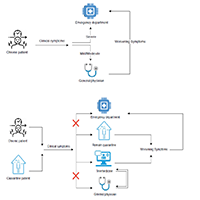 Smart Citations
Smart CitationsSee how this article has been cited at scite.ai
scite shows how a scientific paper has been cited by providing the context of the citation, a classification describing whether it supports, mentions, or contrasts the cited claim, and a label indicating in which section the citation was made.
Social distancing and dangers of access block to health care services during COVID-19 pandemic
An outbreak of the novel coronavirus (COVID-19) that started in Wuhan, China, has spread quickly, with cases confirmed in 180 countries with broad impact on all health care systems. Currently, the absence of a COVID-19 vaccine or any definitive medication has led to increased use of non-pharmaceutical interventions, aimed at reducing contact rates in the population and thereby transmission of the virus, especially social distancing. These social distancing guidelines indirectly create two isolated populations at high-risk: the chronically ill and voluntary isolated persons who had contact with a verified patient or person returning from abroad. In this concept paper we describe the potential risk of these populations leading to an 80% reduction in total Emergency Department (ED) visits, including patients with an acute condition. In conclusion, alternative medical examination solutions so far do not provide adequate response to the at-risk population. The healthcare system must develop and offer complementary solutions that will enable access to health services even during these difficult times.
How to Cite
PAGEPress has chosen to apply the Creative Commons Attribution NonCommercial 4.0 International License (CC BY-NC 4.0) to all manuscripts to be published.

 https://doi.org/10.4081/ecj.2020.9098
https://doi.org/10.4081/ecj.2020.9098





